NIL
2025 NBA draft withdrawal deadline questions: NIL, Florida, Danny Wolf
May 29, 2025, 09:23 AM ET The biggest deadline in the 2025 NBA draft process and the final noteworthy date of the college basketball offseason came and went Wednesday, as the NCAA deadline for players to decide whether to keep their names in the draft or return to school passed at 11:59 p.m. ET. Some […]
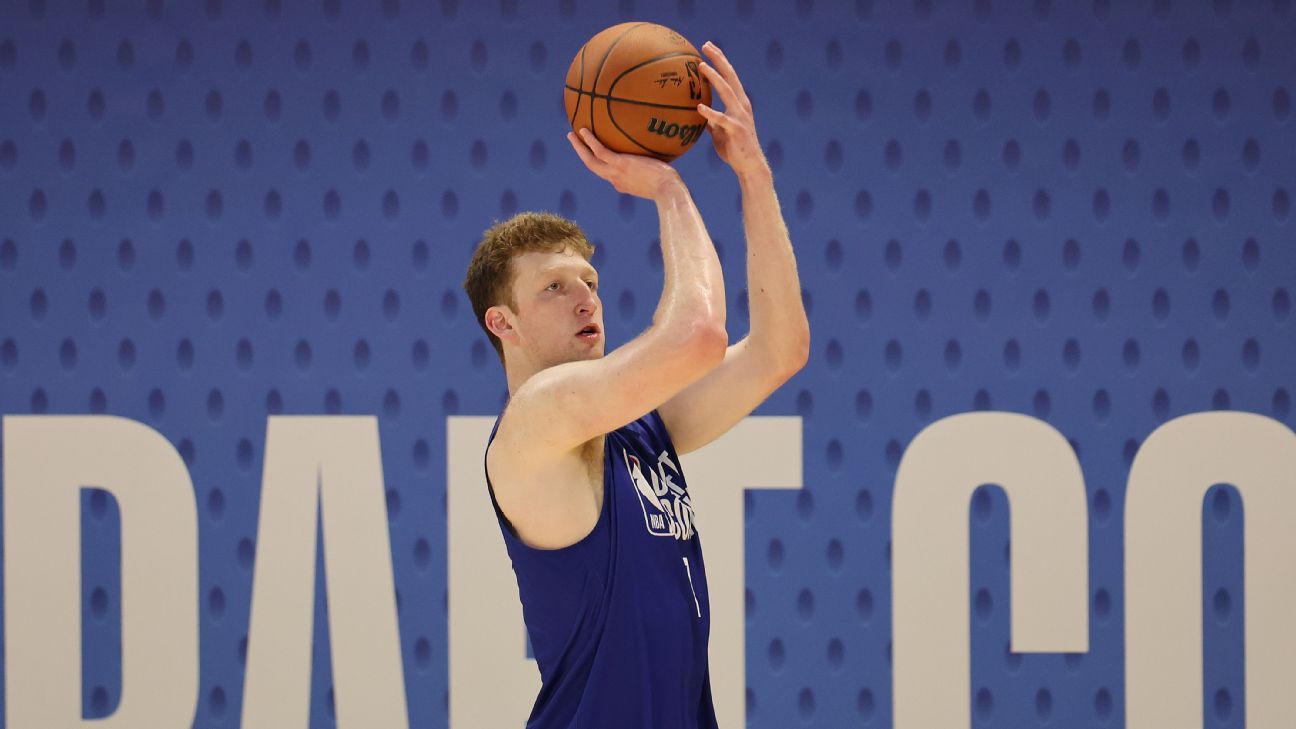
The biggest deadline in the 2025 NBA draft process and the final noteworthy date of the college basketball offseason came and went Wednesday, as the NCAA deadline for players to decide whether to keep their names in the draft or return to school passed at 11:59 p.m. ET.
Some prospects made their stay-or-go decisions at the draft combine earlier this month with Carter Bryant (Arizona), Drake Powell (North Carolina) and Thomas Sorber (Georgetown) all solidifying their intentions to remain in the draft, while others such as Boogie Fland (Florida) and Darrion Williams (NC State) announced their withdrawals.
That left suspense around the impending decisions of about 15 notable players. With prospects weighing feedback from the combine, agency pro days and their final workouts with NBA teams, the last of them took it down to the wire on Wednesday night.
Once midnight passed, though, both the draft (June 25-26) and the 2025-26 college basketball landscapes gained clarity. Which schools benefited the most from players returning to college? Which prospects should make jumps on NBA draft boards in 2026? Can Florida go back-to-back?
ESPN college basketball insider Jeff Borzello and NBA draft insiders Jonathan Givony and Jeremy Woo weigh in on the biggest storylines.
More NBA draft coverage:
Mock draft: Flagg to the Mavs and more
Combine: Risers, fallers | Lottery team questions
Draft assets | Top 100 rankings | Pelton’s top 30

How are NIL deals impacting the NBA draft landscape?
Givony: Not only did we see the lowest number of early-entrant candidates (106) in a decade, but another dozen or so draftable prospects withdrew at the deadline, making this one of the shallowest second rounds we’ve seen in a few years.
NBA teams have expressed surprise and concerns about this development, wondering how effectively they will be able to assemble summer league and G League rosters relative to years past, but most believe this is a temporary bottleneck (one caused by the abnormal amount of money) that will clear in the next year or two as the players who elected to return to school this year exhaust their NCAA eligibility.
This should ultimately lead to an older, more pro-ready crop of rookies in the future, too — arguably with additional cachet among casual fans who have more time to learn about the biggest college basketball stars.
NBA teams also understand they will need to adjust how they evaluate older prospects. In the past, it was easy to knock upperclassmen coming off dominant seasons when compared to younger players. But the level of competition in college has never been higher, with programs now able to recruit the very best players from across the globe, and experienced players staying longer — typically with the top teams in power conferences.
Players staying in school perhaps can’t be frowned upon for 22- and 23-year-olds as it was in the past, and analytics-oriented NBA executives are trying to determine whether — and to what extent — they should be tweaking their draft models to account for this new reality, which is very different than what they built their formulas on using data from the past decade or two. Yaxel Lendeborg, who withdrew and committed to Michigan, will be a prime example of this as 22-year-old projected first-round picks in his mold typically haven’t returned to college.
While the projected top-five picks of the 2026 draft are collectively considered historically good, the depth of this year’s high school senior class — i.e., 2025-26 freshmen — looks fairly poor, which might lead to one of the oldest first rounds we’ve seen in some time this time next year.
Borzello: The entire equation has changed for NBA hopefuls in college (and overseas). The possibility of being selected in the second round was once enough for prospects to keep their name in the draft, but with the ability to make millions through NIL, there’s a trend developing of players returning to college.
Even some projected first-rounders are making the decision to return to school for as much as $3 million in NIL deals while hoping to get firm guarantees from NBA teams a year from now.
A prospect’s decision no longer hinges on hoping his draft stock is good enough to make real money in the NBA vs. playing for free while developing at the collegiate level. With salaries for the final handful of picks in this year’s first round clocking in at below $3 million per season for the next two seasons, per the rookie scale, players projected in that range can now make just as much money by opting to stay in college while theoretically improving their draft stock.
As Givony mentioned, players staying in college for three or four years until they’re 22 is no longer a deal breaker for NBA teams — and that’s a result of both NIL and the transfer portal. Danny Wolf blossomed into a likely first-round pick after transferring from Yale to Michigan. Nique Clifford wasn’t on the NBA draft radar until he transferred from Colorado to Colorado State while Walter Clayton Jr.’s profile rose after transferring from Iona to Florida — both withdrew their names from the draft last year and now have first-round projections.
Which college basketball team is the biggest winner after the withdrawal deadline?
![]()
Borzello: Florida was one. There were other winners, certainly — including Houston (Milos Uzan), Michigan (Lendeborg), Auburn (Tahaad Pettiford) and Kentucky (Otega Oweh) — but the Gators went from a borderline top-20 team to a legitimate contender to open the season as the No. 1 team with a real chance to win back-to-back titles.
Florida was the beneficiary of Fland’s withdrawal, as the Arkansas transfer ultimately committed to the Gators a week after making his decision. Then Alex Condon, a fringe first-round pick, also withdrew to return to Gainesville. With both officially in the fold, coach Todd Golden has as good a starting five as there is in college basketball.
![]()
Alabama was also a surprise winner, with Labaron Philon announcing shortly before the deadline that he was going back to Tuscaloosa. Philon said at the combine that he had closed the door on a return to Bama, but his second-round projection and opportunity for a bigger role as a sophomore makes this the sensible decision.
It’s a huge boost for coach Nate Oats’ team, which had been searching for a dynamic playmaker on the perimeter.
With the addition of Fland and Condon returning, how well are the Gators set up to defend their title?
Borzello: As I mentioned above, Florida ascends into the preseason No. 1 conversation as a result of their decisions. The Gators have a different roster construction from a year ago, when there were more clearly defined roles and arguably better balance and depth throughout the roster. But now Golden has two shot creators and shotmakers in Fland and Princeton transfer Xaivian Lee in the backcourt, and one of the best — certainly the biggest — frontcourt in the country with 6-11 Condon, 6-9 Thomas Haugh, 6-10 Rueben Chinyelu and 7-1 Micah Handlogten handling the lion’s share of minutes.
They’ll have to figure out how everything fits, but there should be more optimism in Gainesville about a repeat than there was earlier this offseason.
Givony: Defend they will, as they are set up very well, with likely the best frontcourt in college basketball. There is plenty of shooting in the backcourt, with Fland, Lee, Ohio transfer AJ Brown and Urban Klavzar, who should be ready to step into a bigger role in his second season in Gainesville. Figuring out the shot-creation hierarchy between Lee and Fland will be important, and there are question marks to answer on the wing, but the bones are in place for a Final Four-contending team.
I would still rank Purdue No. 1 on my preseason ballot because of the certainty of returning two preseason All-Americans in Braden Smith and Trey Kaufman-Renn, but reasonable minds can differ here.
Woo: The biggest driver in March is always guard play, which places a ton of weight on what type of season Fland has as the presumptive lead ball handler. If he can improve on what he showed in his one season at Arkansas, both Florida and Fland should be quite happy with this marriage.
1:44
The best of Boogie Fland’s season with Arkansas
Check out Boogie Fland’s top highlights for Arkansas with news of his transfer to Florida.
Which college basketball team was most hurt by prospects who stayed in the draft?
![]()
Borzello: Penn State. While things had been trending in this direction for Yanic Konan Niederhauser since the combine, it still hurts coach Mike Rhoades and the Nittany Lions to see him keep his name in the draft.
After a relatively anonymous career at Northern Illinois in which he averaged 5.1 points over two seasons, Penn State added Niederhauser from the transfer portal last spring. The Nittany Lions were able to keep him out of the transfer portal earlier this spring and made a competitive offer to keep him, but the Switzerland native’s stock will never be higher than it is now as a borderline first-round pick.
It’s also worth noting that a handful of programs will be hurt by RJ Luis Jr. and Jamir Watkins — the best two available transfers in the portal — opting to stay in the draft. With those two out of the mix, there are very few options left for deep-pocketed schools in need of impact players.
Luis was being pursued by the likes of North Carolina, Kansas, Ole Miss, Villanova and Georgetown, while Washington was among the schools in the mix for Watkins. Where will those schools turn now? USC transfer Desmond Claude is the only uncommitted top-100 transfer, leaving European prospects and 2026 recruits who wish to reclassify as the best options.
The transfer portal most helped this draft prospect because …
Givony: Two years ago, Yanic Konan Niederhauser was coming off a freshman season in which he averaged 2.2 points in eight minutes per game for Northern Illinois. Now he is knocking on the door of the first round after a strong junior season at Penn State and outstanding performances at the G League Elite Camp and combine, where he measured and tested as one of the best athletes in the draft with an array of highlight-reel plays on both ends of the floor that stirred the imagination of NBA scouts.
The 7-footer is clearly on a different trajectory, as evidenced by the stark improvement he’s made in each of the past three seasons and his explosion in Chicago. That ascent likely would not have been possible without going from the obscurity of the MAC and to the pressure cooker of the Big Ten, where he was forced to find another gear with his intensity and put his outstanding physical tools to much greater use.
Woo: Entering the season, Danny Wolf was more of a curiosity for NBA scouts than a bona fide prospect coming off a strong year at Yale. That changed in a hurry, as he proved his skill set translated against high-level competition and settled in at Michigan, playing for a creative coach in Dusty May who was committed to utilizing Wolf’s versatility and playmaking skills.
The fact that Wolf operated as a de facto point guard at times — a role he may not have been granted at another school — added a level of intrigue.
Wolf is still a divisive evaluation among scouts, some of whom question the ultimate translation of his role into a high-value NBA context. But his rise from the Ivy League to likely first-round pick points to the benefits of picking the right school and coach, which even in the face of huge dollar values being thrown around in the portal, should be prioritized as players make their decisions.
Which prospect who returned to school has the best chance to rise in the 2026 NBA draft?
Givony: Several NBA teams were very interested in getting a closer look at Joseph Tugler during the predraft process, but he ultimately decided to not declare, announcing his return to Houston nine days after his season ended with a national championship game loss to Florida.
The 20-year-old is the second youngest player after Anthony Davis (Kentucky in 2012), to win the Lefty Driesell Award, given to college basketball’s best defensive player. He was also the youngest player since its advent in 2006 to win Big 12 Defensive Player of the Year. With his 7-6 wingspan, incredible motor, rim-protection instincts and ability to cover ground on the perimeter, Tugler could become a game changer defensively at the NBA level, too.
If he can find a way to cut down on fouls (he led all draft prospects in this category per-minute last season) and slightly improve offensively (54% free throw percentage), he can make a strong case as a first-round pick next season.
0:16
Joseph Tugler’s dunk brings Houston within 1
Houston comes up with a big steal and Joseph Tugler throws it down to bring the Cougars within a point of Duke.
Woo: I’m interested to see what Tahaad Pettiford will do with a bigger role at Auburn after his positive showing at the combine. Although his size (6-foot-1, 175 pounds) will work against him from a projection standpoint, I was intrigued by the mix of athleticism and skill he flashed in scrimmages, and am curious to see how he develops over the next 12 months. His explosive athleticism and microwave scoring ability will help his case as a potential outlier prospect with his physical dimensions.
Beyond the likely leap in offensive usage headed his way, the biggest thing Pettiford can do next season is demonstrate that he can add value in games where his shot isn’t falling. Part of that process will be expanding his game as a passer and playmaker for teammates, and becoming a more consistently impactful defender. Pettiford will likely always be a score-first player, but if he can be increasingly efficient while making the most of his ability in other areas, he’ll sharpen his case as a first-rounder, where he’ll project to begin next season. Going back to school to work on those things should prove to be a beneficial decision.
Who’s an under-the-radar prospect you like who went back to school and could be a first-round pick in 2026?
Givony: Bennett Stirtz, a 6-foot-4 point guard who played for Drake last season, was one of the breakout stars of the NCAA tournament, posting 42 points and 12 assists in two strong performances against Missouri and Texas, showing his game more than translates against elite-level competition after a dominant season in the Horizon League. Stirtz was ranked No. 35 in the ESPN Top 100 when he announced he would enter the transfer portal and follow his coach, Ben McCollum, from Drake to Iowa, not even bothering to test the NBA draft waters along the way.
NBA scouts won’t complain about having a full season to evaluate Stirtz in the Big Ten, where they’ll get a better feel for how his impressive ballhandling, ability to change speeds, touch and creativity finishing around the basket translate for a full season. Stirtz is a dynamic perimeter shooter who is one of the best passers and decision-makers in college basketball but getting a better gauge for his defense and how he handles coaches planning against him on a nightly basis will surely shed light on how high he should be selected next June.
Woo: Zuby Ejiofor didn’t grab many national headlines this season, but the big man took a major leap at St. John’s, making the All-Big East first team and also named the conference’s most improved player. Although his team’s season ended in the NCAA tournament’s second round, Ejiofor’s 23 points and 12 rebounds against Arkansas left a positive impression, showcasing his physicality and motor in the paint. Though undersized for a center, Ejiofor’s overall impact on the game makes him an interesting role player candidate at the next level.
Ejiofor’s rugged, all-out style raises his team’s floor on a nightly basis, and the fact he recently turned 21 will work in his favor going into his senior season. Continuing to work on his frame, improve his mobility and hone his offensive decision-making could broaden his NBA appeal. It seems likely coach Rick Pitino will lean on him again, leaving room for a step forward in production that could bump his prospect status in a meaningful way.
NIL
Kentucky exploring adding Entertainment District near Kroger Field
Could an entertainment district be coming soon to Kentucky’s campus? The university is at least going to explore the idea as it looks for ways to grow revenue in the new age of college athletics. At yesterday’s UK Board of Trustees meeting, UK Athletics submitted a request for information (RFI) to develop an entertainment district […]
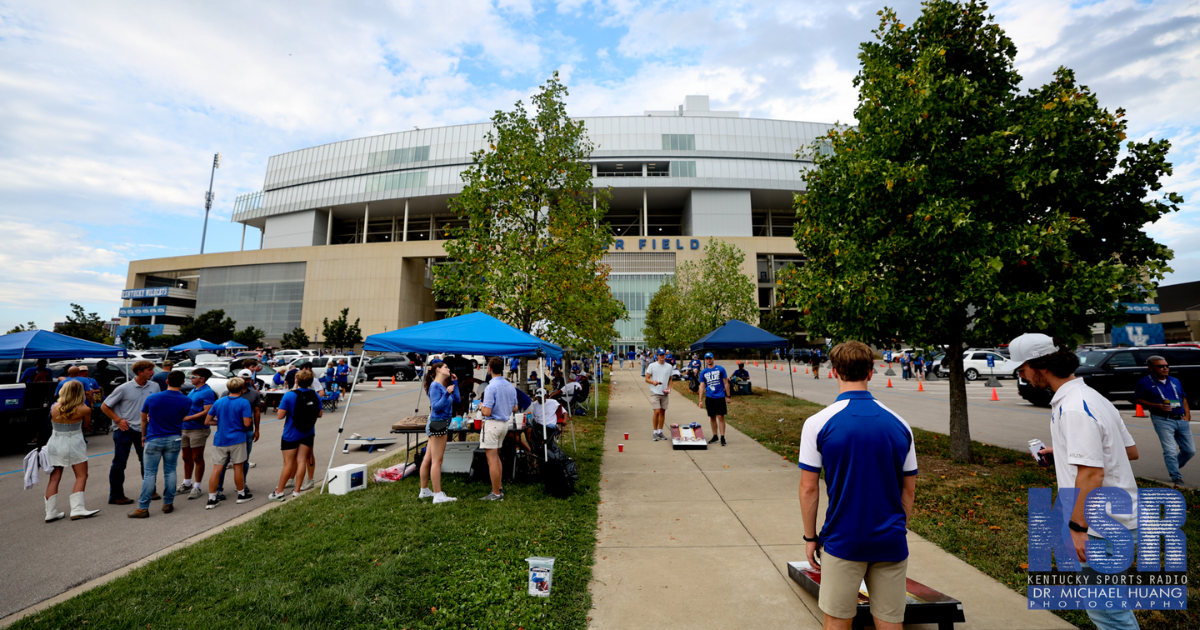
Could an entertainment district be coming soon to Kentucky’s campus? The university is at least going to explore the idea as it looks for ways to grow revenue in the new age of college athletics.
At yesterday’s UK Board of Trustees meeting, UK Athletics submitted a request for information (RFI) to develop an entertainment district on campus, which could include concepts such as restaurants, hotels, and other entertainment options. The request was part of a larger proposal for $110 million worth of investments over the next few years, which was approved today by the Board of Trustees. Although a location was not mentioned in the presentation, the district would presumably be on the south side of campus, adjacent to Kroger Field, Kentucky Proud Park, the Wendell & Vickie Bell Soccer Complex, and John Cropp Stadium.
Athletics director Mitch Barnhart told BBN Tonight’s Maggie Davis that the entertainment district, or “fan zone,” as he called it, would be similar to those in professional sports cities. He specifically mentioned the Deer District outside the Fiserv Forum, which he and Kentucky fans who made the trip to Milwaukee got a firsthand look at during the first and second rounds of the NCAA Tournament in March. The Deer District is an indoor-outdoor sports, retail, and entertainment hub built on 30 acres, at the center of which is a large plaza, where, in 2021, 65,000 fans gathered to watch the Bucks’ NBA Championship run. The district includes several bars, restaurants, shops, and even an outdoor beer garden. As someone who went there more than once during that weekend, it’s pretty awesome.


Other schools have already announced plans for entertainment districts near their football stadiums, most notably Tennessee. The 175,000 square foot Neyland Entertainment District will include a 240-room hotel with 60 additional condos, retail, restaurants (including one with a rooftop), a conference center, and a pool with a terrace. The area will tie together Neyland Stadium and Food City Center. Kansas is also building the Gateway District, a new entertainment and lodging district surrounding Memorial Stadium.
Where exactly would Kentucky’s entertainment district be located? There are some intriguing options around Kroger Field. That could further cut into the tailgating areas; however, now that schools can distribute up to $20.5 million to their athletes this upcoming year (and increasingly more in the years after that), Kentucky needs all the money it can get. That’s the primary reason that over the next year, UK Athletics will transition to Champions Blue LLC, a non-profit holding company designed to give the department more flexibility to unlock new revenue streams through public-private partnerships and potentially other transactions, such as real estate. Maybe that real estate includes more property around the stadium for the entertainment district?
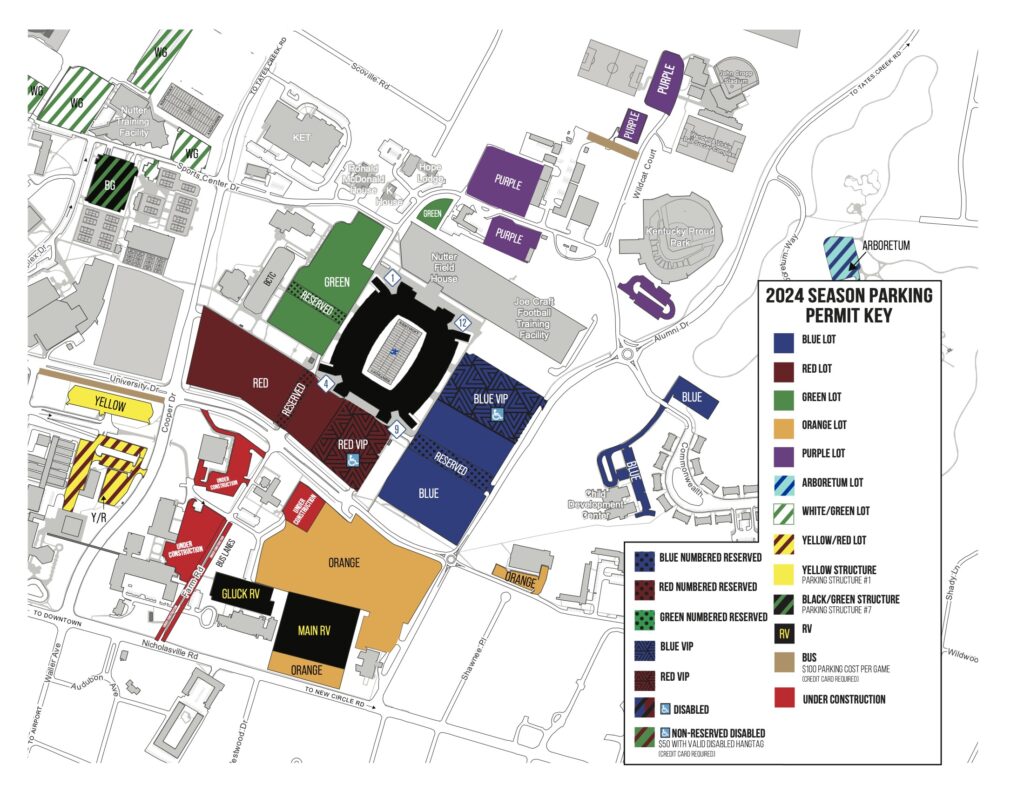
Now that the request for information has been submitted, UK can start exploring some options. As much as we all love tailgating, UK is only making money off parking passes and the REVELxp VIP tailgate setups (which I can’t imagine have been selling like hotcakes). Creating a new area near Kroger Field where fans can eat, drink, and even stay, with the athletic department getting a piece of the pie through partnerships, is just smart.
Imagine having a hotel room right next to the stadium on a big gameday, or even during basketball season, the district being used for watch parties for away games and the SEC and NCAA Tournaments. It would be awesome.
Renovations coming to Kroger Field
Another part of the $110 million investment is $36 million for Kroger Field. Thirteen million of that will go toward maintenance, $18 million for renovations to the corner suites, and $8 million for the initial design of a West End Zone Club space and wi-fi improvements.
“Obviously, you have to continue to maintain and repair the stadium,” Barnhart told Maggie Davis. “For safety reasons, making sure that all the components, the stairwells, ramps, those kinds of things, that there’s not anything that’s going to put our patrons at risk, so that’s important.
“The other piece is just the fan amenities that allow us to bring new revenue streams, to be able to do some things differently in our suites, really, really important. Those are priorities. What things, what decisions do we make that allow us to create revenue streams or be more efficient, or make sure that we’re prioritizing our fan experiences the right way?”
UK Athletics also requested $5 million for renovations to the soccer and softball facilities. Kentucky will host the SEC Softball Tournament in 2026.
NIL
Chris Petersen talks Shedeur, NIL & the future of College Football
THE HERD WITH COLIN COWHERD Trending MLB NFL Gold Cup UFL INDYCAR NASCAR LIV NBA NHL PGA NCAAFB 0
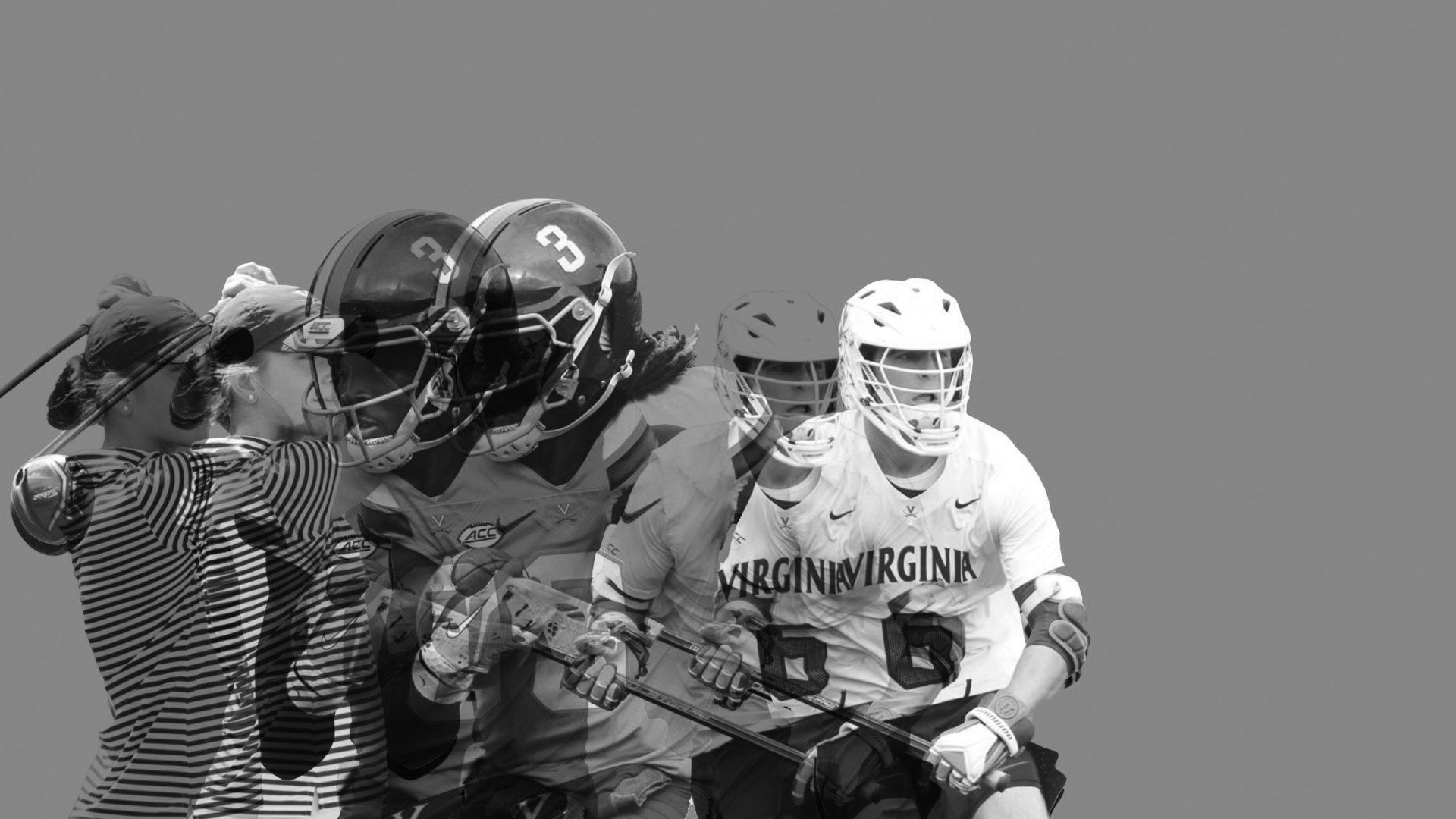
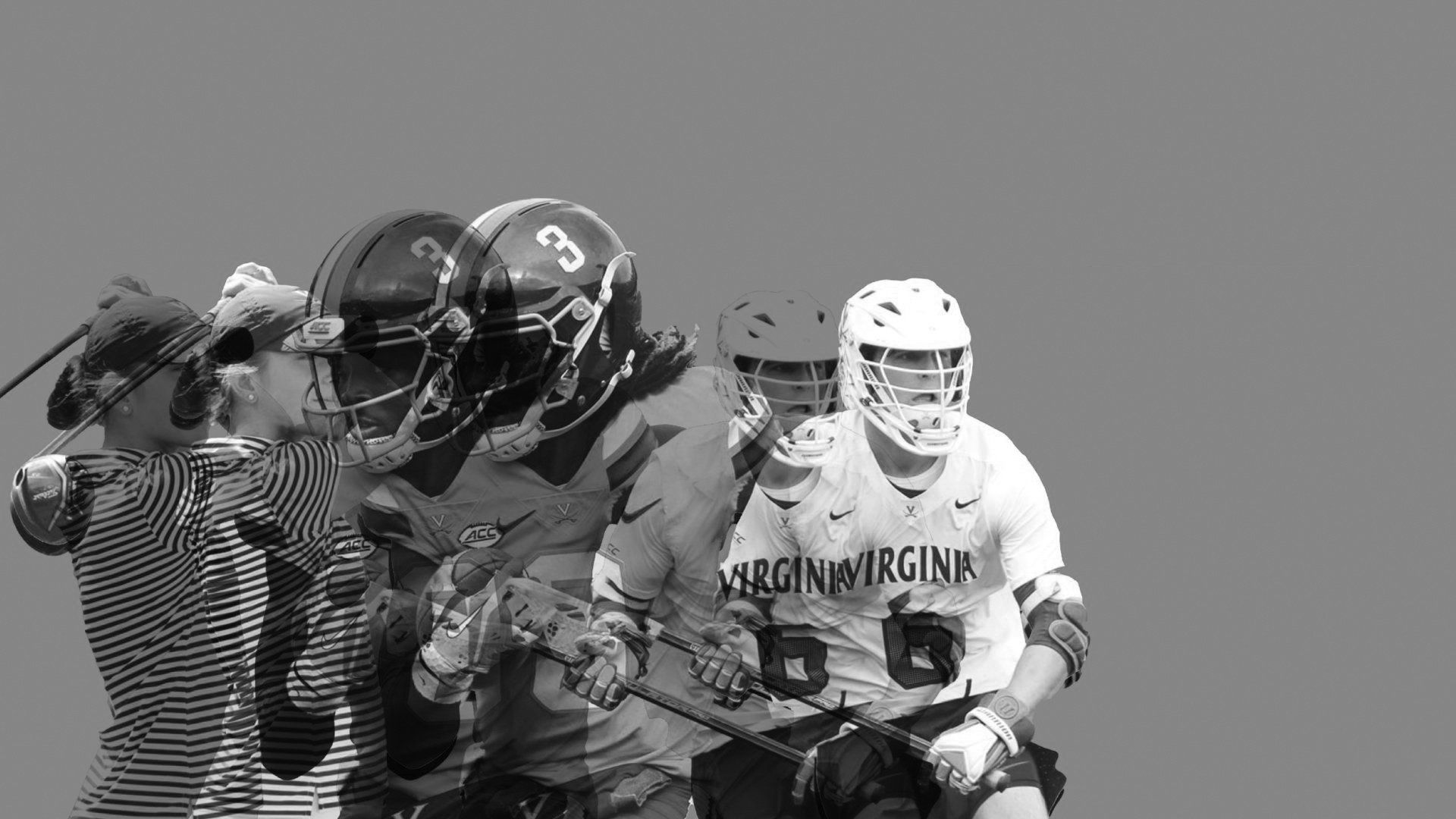
THE HERD WITH COLIN COWHERD
Trending
MLB
NFL
Gold Cup
UFL
INDYCAR
NASCAR
LIV
NBA
NHL
PGA
NCAAFB
NIL
On3 CEO addresses ex-employee’s Tennessee role
Many sports media dimensions have seen increased discussions of conflicts of interest lately. In a lot of cases, though, those conflicts have been disclosed to both employers and to the public; they can still be questioned, but viewers or readers at least are aware of them. According to On3 founder and CEO Shannon Terry, that […]

Many sports media dimensions have seen increased discussions of conflicts of interest lately. In a lot of cases, though, those conflicts have been disclosed to both employers and to the public; they can still be questioned, but viewers or readers at least are aware of them. According to On3 founder and CEO Shannon Terry, that wasn’t the case with ex-employee Grant Frerking, who was a consultant for University of Tennessee head football coach Josh Heupel while serving as On3’s president of NIL University and director of athlete network development:
On3 had no knowledge of this relationship. Grant was explicitly instructed not to engage, either directly or indirectly, with the University of Tennessee or its associated collective. On multiple occasions during his employment, he was asked to confirm compliance with this… https://t.co/6rUtzVVgSy
— Shannon Terry (@ShannonTerry) June 12, 2025
Here’s the full text of that post, which Terry put out on X Thursday in response to a Knoxville News Sentinel story from Adam Sparks on Frerking (which has since been updated to reflect Terry’s comment):
On3 had no knowledge of this relationship. Grant was explicitly instructed not to engage, either directly or indirectly, with the University of Tennessee or its associated collective. On multiple occasions during his employment, he was asked to confirm compliance with this directive, and he repeatedly denied any involvement. These representations were false. He lied to us.
The Frerking saga is notable on several levels. Frerking was a significant figure in On3’s NIL efforts, and was particularly cited as a key figure in arranging their NIL summits, involving speakers from ESPN CFB analyst Kirk Herbstreit to former LSU gymnast Livvy Dunne to chief marketing officers of Fortune 100 brands. He also often represented On3 in interviews on other media outlets.
Those media appearances included repeated appearances on SEC Network’s The Paul Finebaum Show, an appearance on Tomi Lahren’s Fox Nation show, appearances on Outkick 360 and The Athletic podcasts, and more. And while it wouldn’t have been unexpected for Frerking to have some fondness for the Volunteers considering his 2017-22 playing career with that team (he started as a walk-on, and while he only saw limited on-field action, he was cited as a member of the team’s leadership council), there’s a difference between that and serving as a paid consultant to a coach while also offering seemingly-independent commentary on that coach and program. And the latter is what’s under discussion here.
Sparks wrote that Tennessee provided the paper with documents indicating that Frerking worked for the university as a Nashville-based part-time consultant from July 2023 through this month, earning $30,000 for that role. (His contract expires as of June 30, but he no longer works for the school, and they don’t owe him any further pay.) Frerking’s duties there included “advising and consulting football coaches on best practices to navigate the current college football climate,” “assisting and advising Heupel and staff on off-field matters related to the program, both internally and externally,” “aiding in future development of program by speaking on panels and attending events (which included numerous appearances on “The Paul Finebaum Show” on SEC Network),” and more.
Frerking started with On3 almost two years earlier, in August 2021. He began work there ahead of his second-to-last season playing for Tennessee, then continued there after his playing career ended. He then worked there through May 27 of this year, leaving amidst “allegations of criminal misconduct” as per an On3 statement.
Those “allegations of criminal misconduct” are the wider issue here. Sparks and colleagues Mike Wilson and Tyler Whetstone covered a lot of that in a separate piece Thursday, which looks at how Frerking “gained fame during his playing career as the teenage CEO of what was described as a $1 million company” but “has tumbled into a mess of financial scams and legal issues that have him asking former Vols athletes for loans.”
That piece describes claims of Frerking saying he still worked at the Metro Straw ground cover company he founded while still a Tennessee player (which received a glowing writeup in The Athletic back in 2018) for years after his departure. It has accounts from people who say he used that connection (which the company disavowed in an undated online post this year, saying they parted ways with him years ago) to scam people ordering straw into making direct Venmo payments to someone associated with him and not receiving any product. There are also discussions of unpaid rent, evictions, unpaid limo fees, and more.
Those other allegations are more significant in the big picture than the discussion of Frerking working for On3 and Tennessee at the same time. And there have been many discussions of players-turned-broadcasters’ roles with their former teams over the years, from Udonis Haslem to Tom Brady to Grant Hill, David Ortiz, and Jessica Mendoza; while some of those situations (Mendoza’s in particular) have ended with the broadcasters shifting away from commentary on that sport, most have seen them continue despite ties to a former team.
But this situation goes beyond those in one crucial way: the lack of disclosure. Terry’s note here that Frerking “was explicitly prohibited” from engaging with Tennessee or its collective while working for On3, and surrounding claim that “he lied to us,” suggests he and that company were not on board with the dual role Frerking ultimately wound up with here. Beyond that, it’s certainly strange that Frerking’s role with Tennessee included “aiding in future development of program by speaking on panels and attending events (which included numerous appearances on “The Paul Finebaum Show” on SEC Network)”; the claim that Tennessee paid Frerking to appear there, presumably without that program’s knowledge, carries some questions for both sides.
That may lead to more discussions about dual roles in the college media/NIL space in particular. And those have heated up recently on other fronts, including with another situation at Ohio State drawing scrutiny earlier this year. Many of the specific details of the claims against Frerking may not be more widely relevant, but conversations about media employees also working for schools or collectives certainly are.
NIL
Bryce Underwood, Dakorien Moore among college football freshmen poised to make impact in 2025 season
The college football offseason storylines are no longer dominated with intel on how freshmen look in spring practice or fare in summer workouts. Most of the attention has turned to transfers and their place on the depth chart. But that doesn’t mean freshmen won’t help shape the 2025 college football season. After all, what would […]

The college football offseason storylines are no longer dominated with intel on how freshmen look in spring practice or fare in summer workouts. Most of the attention has turned to transfers and their place on the depth chart. But that doesn’t mean freshmen won’t help shape the 2025 college football season.
After all, what would Ohio State have been last year without superstar Jeremaih Smith? You could say the same of Alabama with Ryan Williams or Florida with DJ Lagway.
There are always freshmen who emerge as impact players. With spring practice behind us and fall camp coming up quickly, let’s look at some freshmen poised to provide major production (and in some cases, blossom into superstars) during the 2025 season.
College football’s summer agenda: One area every top 25 team must address for success in 2025
Brad Crawford
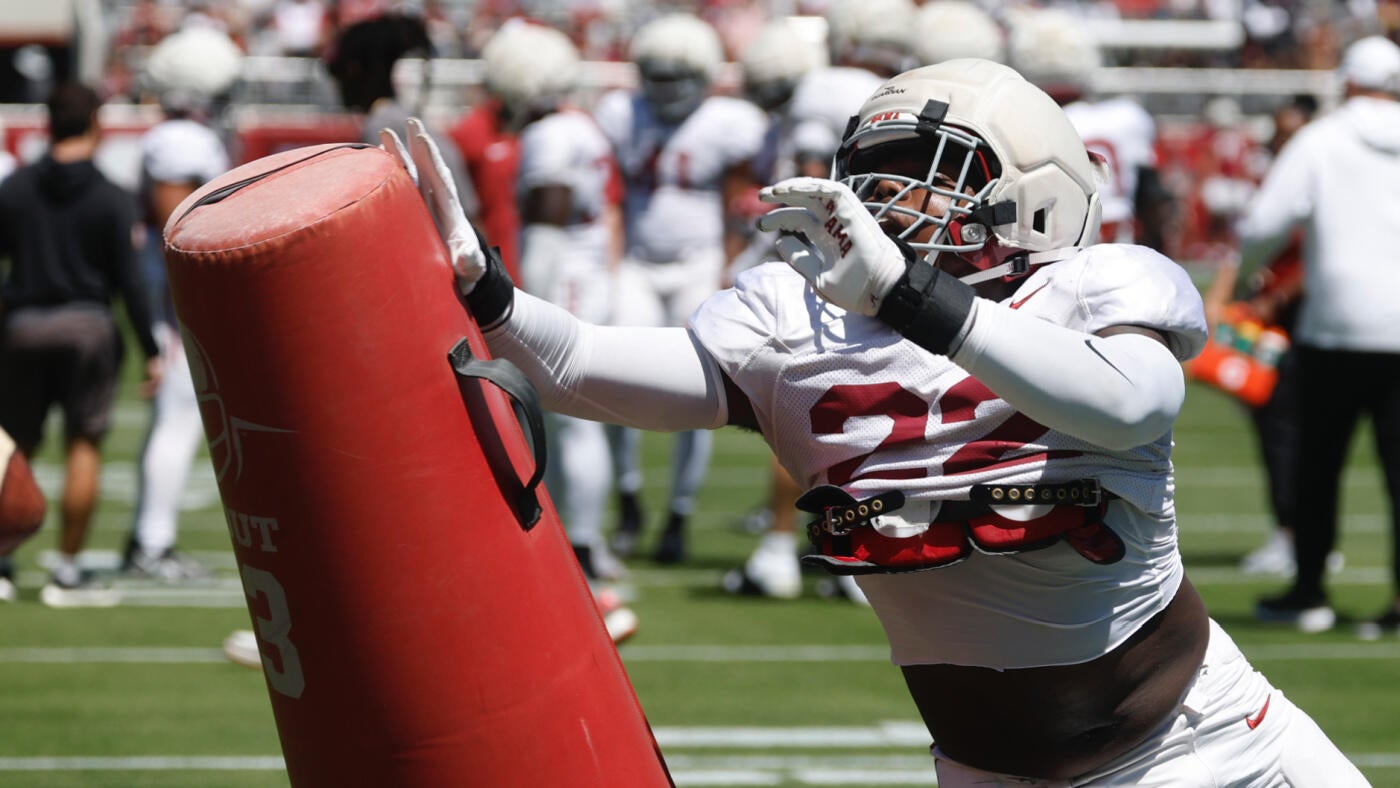

Underwood is already a cover athlete for the deluxe edition of the “EA Sports College Football 2026” video game. No freshman in the country commands a bigger than Underwood — who flipped from LSU to Michigan late in the 2025 cycle in part due to an eye-popping NIL deal that exceeded $2 million a year, per sources.
The imposing 6-foot-4, 208-pounder has been as advertised since showing up in Ann Arbor with a game that reminds the good folks at 247Sports of Vince Young. Underwood got better throughout spring practice. But he’ll have to hold off Fresno State transfer Mikey Keene, who missed most of spring with an injury, to win the starting job.
Even if Keene exits fall camp as QB1, Underwood is going to play at some point. He’s the Wolverines’ future. Frankly, they have way too much NIL money tied up with him for Underwood to sit for long.

After losing Billy Edwards to Wisconsin, Maryland could have replaced him with an experienced transfer. Instead, they went with UCLA’s Justyn Martin, who’s thrown 35 passes in his three-year career. That left the door open for Washington to push for the starting job. The freshman took advantage of the opportunity, capping things off an impressive spring with a 12-for-18, 168-yard and two-touchdown performance in the Terrapins’ spring game.
While Maryland coach Mike Locksley was noncommittal on naming a starting QB exiting spring, Washington has momentum. Keep in mind, Washington is a critical recruit for Mike Locksley. He’s an in-state prospect and one of the highest-ranked offensive players to ever sign with the program. Washington is the type of player who could define Locksley’s tenure. Those type of QBs tend to get on the field sooner rather than later.

No blue-chip running back from the 2025 class enters a better situation for early playing time than Davidson. Behind just 295 yards in 2024, Jay Haynes was set to return as the Tigers’ leading rusher, but he tore his ACL in December. Everyone else in the room has even less experience or — in the case of Adam Randall — is new to the position after making the switch from wide receiver. That’s what makes Davidson so intriguing.
247Sports’ No. 5 back averaged more than 10.5 yards per carry in his high school career and has hit sub-10.7 seconds in the 100-meter dash. He also put together a strong spring. Clemson coach Dabo Swinney called Davidson a “natural” as he pushed his way up the depth chart.
It’d a surprise if Davidson didn’t emerge as a high-level contributor in Year 1. Clemson needs him to do so if it hopes to reach its ceiling.

If you’re looking for the wide receiver in the 2025 class with Smith or Williams’ impact potential, Moore is your guy.
Talking to coaches during the 2025 cycle, Moore was on a tier of his own as a receiver prospect coming out of Duncanville High School in Texas. Moore combines elite track and field times — he hit 10.4 seconds in the 100 meter dash as a junior — with incredible production (145 catches, 2983 yards as an upperclassman) against the highest level of competition in Texas.
Maybe it was just a case of giving the fans what they want, but it’s worth noting that Moore received the first two targets of Oregon’s spring game. He’s drawn rave reviews since enrolling in January and has an excellent chance to start.

One of the most productive high school receivers in Sunshine State history, Boggs produced an eye-popping 99 catches for 2,133 yards and 24 touchdowns as a senior for 2A Cocoa High School. Boggs does lack some of the high-level athletic traits of some of his peers, but he makes up for it with a thick build (6-feet-1, 204 pounds) and a suddenness in the open field that allows him to generate chunk yards in the slot.
Boggs drew a lot of praise this spring from the Florida State coaches.
“He’s still learning, figuring it out, we’ve moved him around just a little bit, he showed maturity to handle, we’re still pushing from more from him, but he’s definitely been a bright spot,” coach Mike Norvell said, per Noles247.

Never overreact to spring game performances. They’re often misleading and far from an indication of what a depth chart will look like come fall. But it was hard not to come away from Florida’s spring game thinking Wilson, who caught 10 passes for 195 yards and two touchdowns, will play a role for the Gators this season.
A top-50 prospect out of high school, Wilson is part of a suddenly loaded Florida wide receiver room. He’ll likely be behind J. Michael Sturdivant, Eugene Wilson and perhaps Aidan Mizell in the Gators’ pecking order, but he’s at least earned a spot in Florida’s two-deep. And if the buzz behind the scenes is any indication, he could end up playing an even larger role for the Gators this year.
Getty Images

David Sanders, OT, Tennessee
The Vols return only one starter on the offensive line. When you combine that with the fact Sanders was a very highly paid player out of high school — follow the money with depth chart projections — and it’d be a surprise if Sanders didn’t start most of the season.
It helps his case that Larry Johnson, the player who earned most of the first-team reps at right tackle during the spring, transferred to Colorado. That leaves the door is wide open for Sanders to emerge as a Day 1 starter opposite standout left tackle Lance Heard. Sanders needs to show continued improvement in the weight room — he gained 20 pounds from the winter to the end of spring practices — but the Vols didn’t pay Sanders to sit this season.

Stewart, who reclassified into this class, is younger than most players on this list — he just turned 18 in May after reclassifying from the 2026 class. But he is also 6-5, 290 pounds and one of the most physically impressive freshmen in the country.
Expect Stewart to be a big part of USC’s defensive rotation. He will start on the edge over the interior and is someone USC can use in multiple roles across the defensive front.
“It’s rare what he does,’ USC defensive coordinator D’Anton Lynn said in April, per USCFootball.com. “”I knew he’d be good, but, like, just his first week, it just caught me off guard. He looks like a grown man out there and just seeing like, his strength, the way he gets off blocks, his ability to play end and to play three tech, it’s impressive. He’s played just about everywhere up front, and he’s done an outstanding job.”

Yep, another Tiger. There’s a reason for that: Swinney plays more freshmen than any other blueblood coach. Clemson rarely dips into the portal to backfill its roster, which means first-year players, even during a season in which the Tigers return almost everyone, can see the field early. Adams will be one of those freshmen.
Swinney made that determination way back in March: “He’s going to help us. That’s what we’ve seen.”
The 6-4, 285-pounder wrecked games in high school. He did the same at the Navy All-American Bowl, an annual showcase of the best high school prospects. Adams is massive, powerful and the type of interior defender capable of consistently generating backfield pressure. Given Clemson struggles on the interior last year behind Peter Woods, Adams projects as an ideal rotational piece after Woods and DeMonte Capehart on the depth chart.

Kirby Smart has done nothing but land five-star defensive linemen since showing up in Athens. So, it’s notable that Griffin is the highest-ranked defensive lineman to sign with the Bulldogs under Smart.
Griffin had a strong spring, too, generating plenty of hype even if Smart attempted to downplay any Jalen Carter comparisons midway through spring ball. Said his teammate Jordan Hall, per Dawgs247: “Strong as all get out, you know what I’m saying? He’s an ox.”
While Christen Miller and Xzavier McLeod project in front of Griffin on the depth chart, there’s little proven experience on UGA’s roster outside of that pair. It’ll be up to those like Hall and Joseph Jonah-Ajonye to hold off the young freshman for playing time.

Auburn spent much of the offseason looking to add an impact to its defensive line room through the portal. The Tigers never quite landed that guy, instead adding a trio of role-playing transfers. But Autry is capable of being a true game changer inside for Auburn.
While the best snaps for the 6-foot-5, 339-pounder will come in the years ahead as he transforms his body and refines his technique, Autry still brings the combination of size, power and pocket-collapsing ability you find in only the rarest of physical talents.
Maybe it doesn’t happen early in the season for Autry, but it’d would be far from shocking to see him emerge as a key contributor for Auburn this year. The Tigers have a need, and Autry is going to be hard to keep off the field, especially for a team that played six interior defenders at least 70 snaps last season.

Pickett is going to play for LSU this season. The question is, how much? Pickett is exactly what the Tigers need as a 6-foot-4, 190-pound lockdown cornerback prospect.
Pickett is going to play for LSU this season. The question is, how much? Pickett is exactly what the Tigers need as a 6-foot-4, 190-pound lockdown cornerback prospect. The Tigers’ secondary struggled last year, ranking 68th nationally in opposing passer rating, and Pickett — along with several transfers — were big offseason additions meant to address that issue.
Pickett will have to climb over those like Florida transfer Ja’Keem Jackson and sophomore PJ Woodland on the depth chart, but he’s a very safe bet to play early and often for the Tigers. He has the chance to be the best LSU cornerback since Derek Stingley.

Between returners Davison Igbinosun and Jeremaine Matthews, Ohio State is set with its starting cornerback group. But there’s a good chance Sanchez is the first off the bench.
Being the top backup CB is a role Matthews occupied last year on his way to 396 snaps, so Sanchez is still in line for a big role.
He’s certainly ready for it physically. A constant near the top of the 247Sports 2025 rankings since their debut, Sanchez was a dominant high school football player, combining elite production with a rare combination of size, instincts and high-level athletic traits. He won’t have a Smith-level impact for the Buckeyes in Year 1. But he’s in line to be a big part of Ohio State’s defense.
Other freshmen to watch for preseason top 10 teams

No. 1 Texas: Daylan McCutcheon, WR | Justus Terry, DL
McCutcheon had a standout spring for Texas, frankly flashing ahead of a trio of top 50 wide receivers the Longhorns brought in (Kaliq Lockett, Jjaime Ffrench, Michael Terry). Don’t be surprised if all four of them get some run for Texas this season with an unproven receiver room outside of Ryan Wingo and Emmett Mosley. Terry, for his part, is starting his career on the edge but projects as a long-term interior player for Texas.

No. 2 Penn State: Daryus Dixson, CB | Koby Howard, WR
Dixson is among the most ready-to-play freshmen in the 2025 class coming out of California powerhouse Mater Dei High School. He could be on the field a lot behind AJ Harris and Elliot Washington. PSU did a nice job shoring up the wide receiver position in the portal, but Howard was a buzzy name for PSU this spring and could earn some snaps. Also don’t sleep on fellow freshman receiver Lyrick Samuel, who led the Nittany Lions in receiving during the spring game.

No. 7 Notre Dame: Elijah Burress, WR | Madden Faraimo, LB
There isn’t a ton of room on Notre Dame’s depth chart for true freshmen to emerge as starters. But Burress and Faraimo posted strong enough performances in the spring that they should at least be in the rotation. Don’t be surprised if a corner like Cree Thomas or Dallas Golden also pushed their way onto the depth chart.

No. 8 Alabama: Michael Carroll, OL | Dijon Lee, CB
Yep, two five-stars for the Tide. Carroll was thought to be the best interior o-line prospect in the 2025 class, but he spent most of the spring playing offensive tackle. It’ll be interesting to see if he stays there going into the fall. Either way, he’s a two-deep lock. You could say the same of Lee, who had a strong debut for the Tide and projects to be right behind Domani Jackson and Zabien Brown on the depth chart at cornerback. A few of Alabama’s freshman receivers flashed this spring, but the Tide are so deep at that spot it’d be a surprise for someone to pull a Williams.
NIL
Breakout candidates for USU football / Details on “NIL Go” / Logan Hammer, Shelby Jensen at NCAA Nationals – June 13, 2025 | Podcasts
Jason Walker and Eric Frandsen discuss the latest in local sports, starting with their picks for players they think will have breakout seasons for Utah State football. Also, more details have been reported about the new “NIL Go” clearinghouse that will monitor NIL deals in college sports. And a look at Logan Hammer and Shelby […]
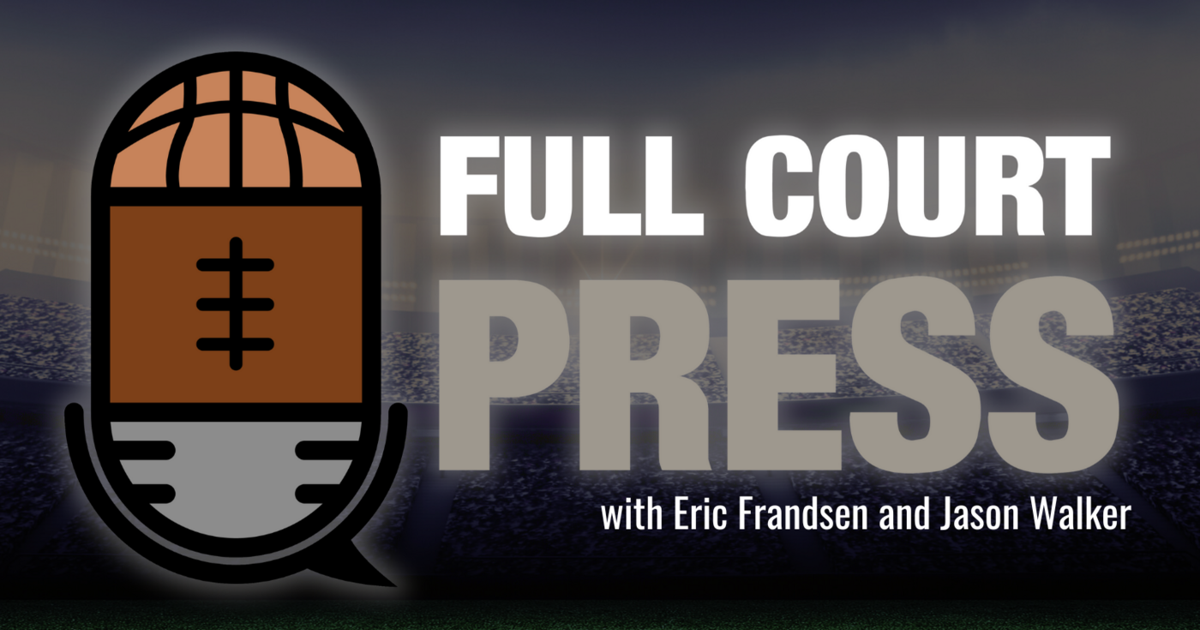
Jason Walker and Eric Frandsen discuss the latest in local sports, starting with their picks for players they think will have breakout seasons for Utah State football. Also, more details have been reported about the new “NIL Go” clearinghouse that will monitor NIL deals in college sports. And a look at Logan Hammer and Shelby Jensen’s success at the NCAA Nationals this week.
NIL
Latest comments from Ross Bjork have Ohio State football fans jumping for joy
The Ohio State football program is figuring out how to navigate the fact that it will have a strict NIL budget to follow now that the House settlement has been approved. They have been planning for this for a while, but some fans were surprised at how small the budget is. For the entire athletic […]

The Ohio State football program is figuring out how to navigate the fact that it will have a strict NIL budget to follow now that the House settlement has been approved. They have been planning for this for a while, but some fans were surprised at how small the budget is.
For the entire athletic department, the Ohio State Buckeyes will have $20.5 million to work with in terms of NIL money. How that money gets dispersed will be up to Ross Bjork and the athletic department now that athletes will be paid directly from the school.
Bjork recently spoke to the media for about an hour. He re-committed to keeping all 36 varsity sports and spoke on a number of other topics. One of those topics is the topic of revenue sharing. His thoughts have Ohio State football fans ecstatic.
Ohio State football fans are happy with Ross Bjork’s comments on revenue sharing
Bjork revealed that the Buckeyes will share about $18 million worth of revenue, and that will be shared among four sports: football, men’s and women’s basketball, and women’s volleyball. That’s where the revenue sharing will start, and that will be reassessed after this year.
Ohio State will certainly use that money well with the football program. Any extra money that can be used to keep current players on the roster or get new recruits is money well spent. Ryan Day will have a better idea of how to allocate that money once things get nailed down.
Winning a national championship certainly helps the football team’s claim to some more money. The Buckeyes will learn who deserves that money once they’ve had a year to try some things out. This is something they’ve been planning for, so they won’t be caught off guard.
Bjork seems to have a good idea of which programs deserve this extra money. If they are able to make more, perhaps some other programs will also be able to join the revenue-sharing party. Until then, these four programs will be the ones that benefit.
The Buckeyes are in a really good spot to keep succeeding in the current landscape of college football.
-

 Health1 week ago
Health1 week agoOregon track star wages legal battle against trans athlete policy after medal ceremony protest
-

 Professional Sports1 week ago
Professional Sports1 week ago'I asked Anderson privately'… UFC legend retells secret sparring session between Jon Jones …
-

 College Sports2 weeks ago
College Sports2 weeks agoIU basketball recruiting
-

 NIL3 weeks ago
NIL3 weeks ago2025 NCAA Softball Tournament Bracket: Women’s College World Series bracket, schedule set
-

 Professional Sports1 week ago
Professional Sports1 week agoUFC 316 star storms out of Media Day when asked about bitter feud with Rampage Jackson
-

 Rec Sports2 weeks ago
Rec Sports2 weeks agoScott Barker named to lead CCS basketball • SSentinel.com
-

 Rec Sports2 weeks ago
Rec Sports2 weeks agoJ.W. Craft: Investing in Community Through Sports
-

 Motorsports2 weeks ago
Motorsports2 weeks agoNASCAR Penalty Report: Charlotte Motor Speedway (May 2025)
-

 Motorsports2 weeks ago
Motorsports2 weeks agoRockingham Speedway listed for sale after NASCAR return
-

 College Sports2 weeks ago
College Sports2 weeks agoOlympic gymnastics champion Mary Lou Retton facing DUI charge



 (via @dasean_/TT)
(via @dasean_/TT)


























